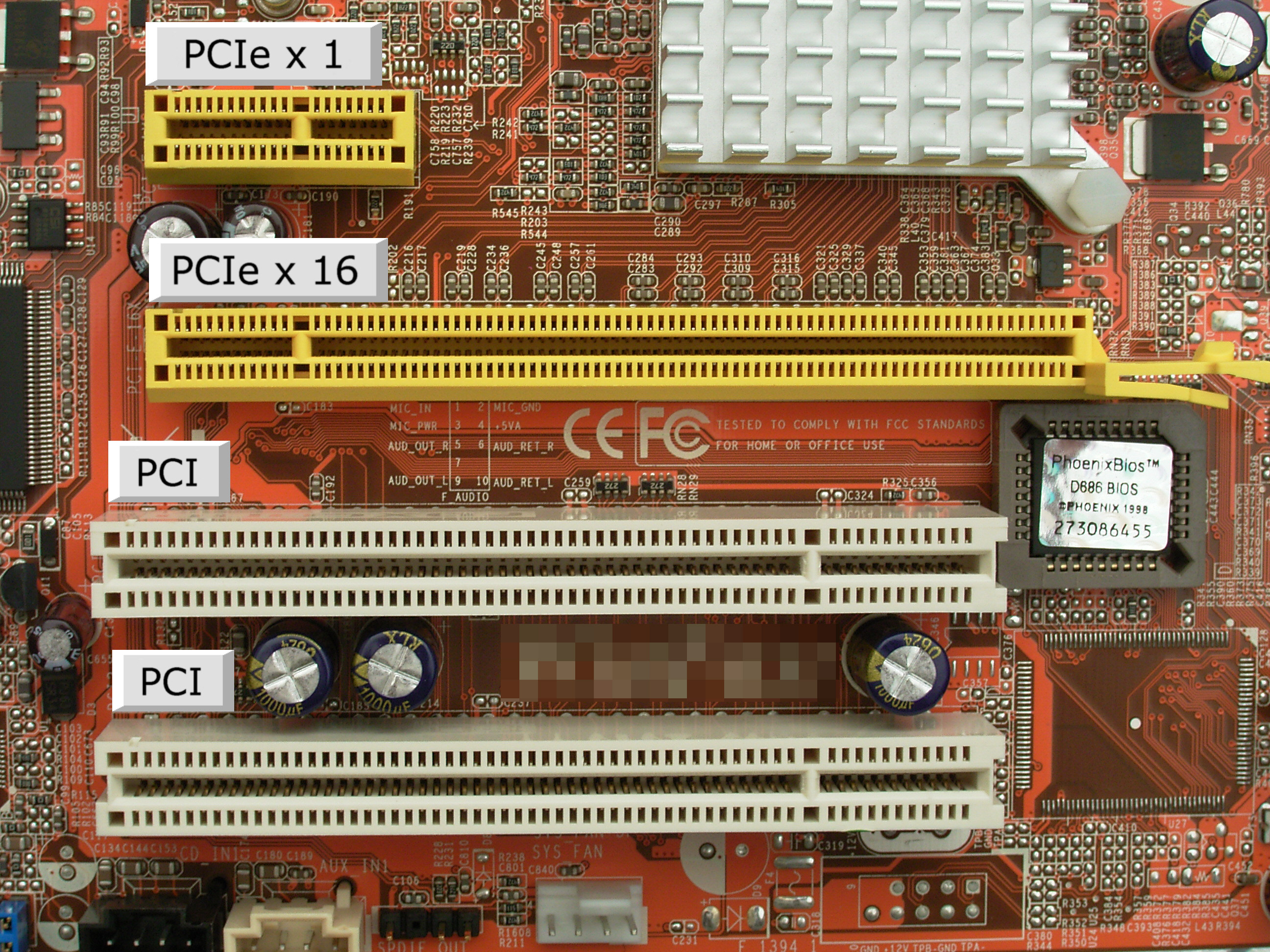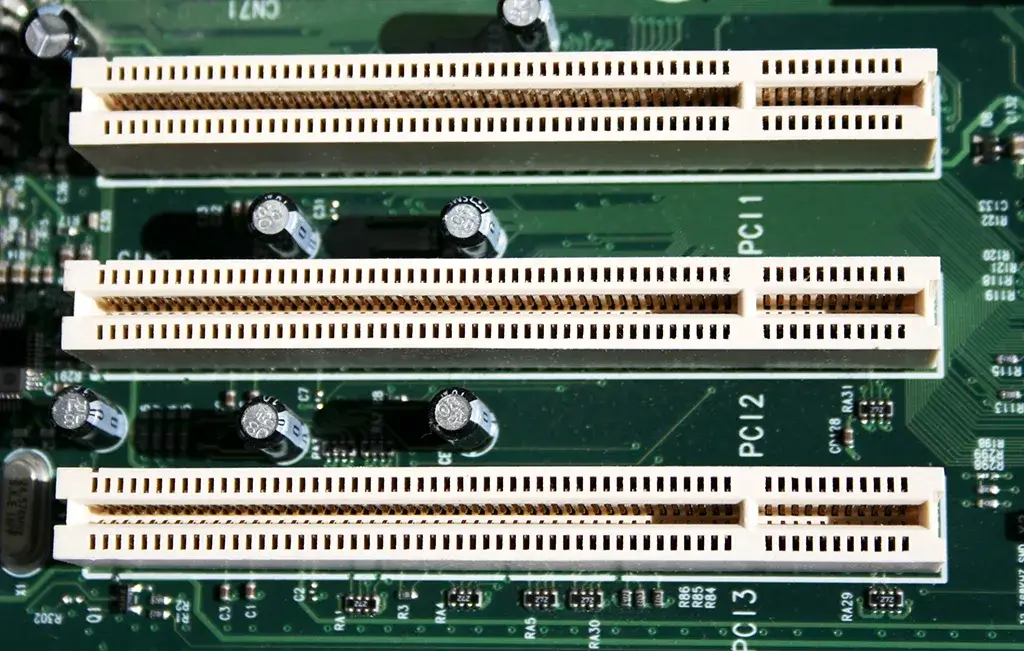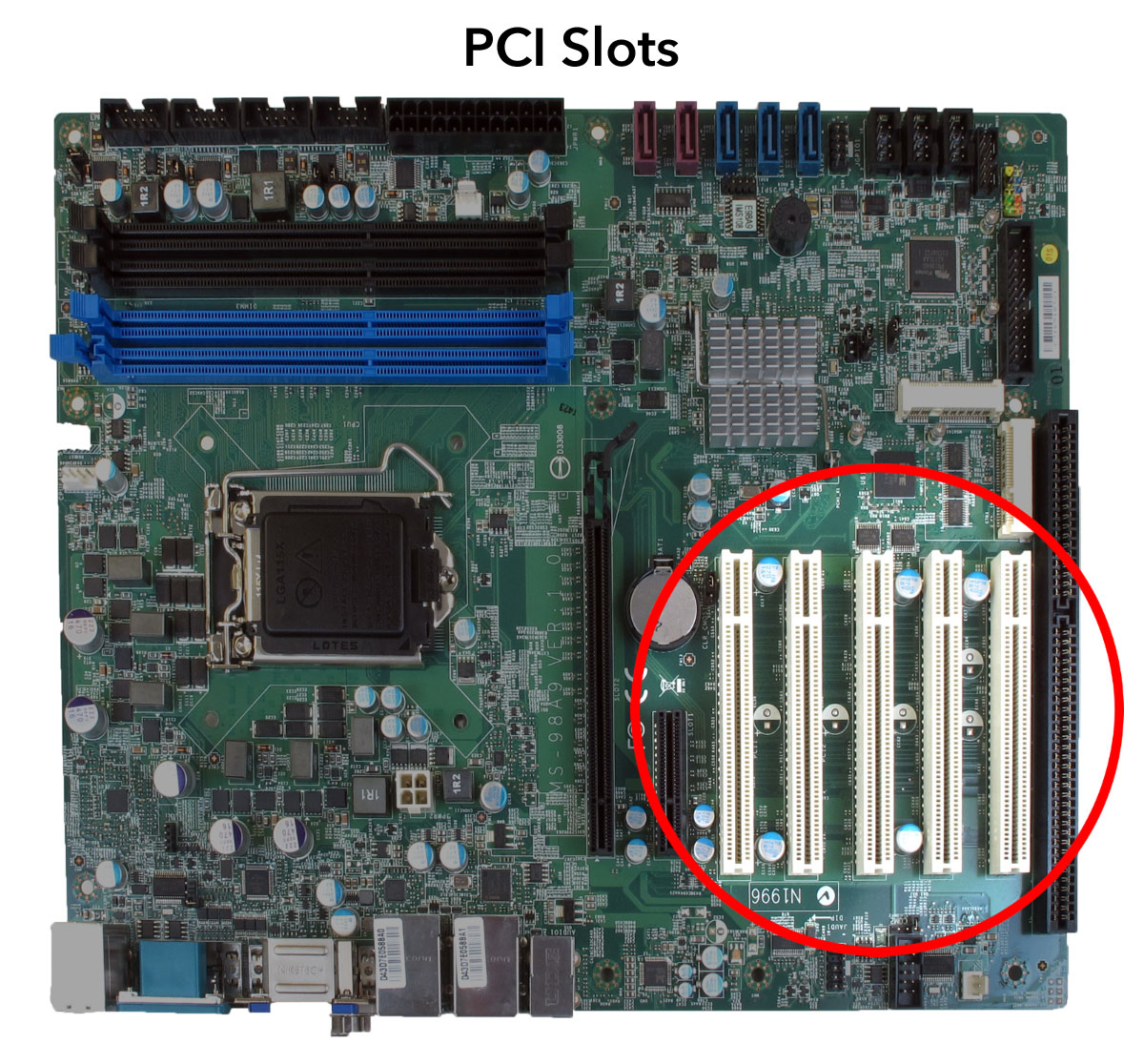PCI Auctions - Finding Value In Specialized Hardware
Sometimes, finding just the right piece of computer equipment means looking beyond the newest items on store shelves. For folks needing very particular capabilities or perhaps trying to keep older systems running, the answer often lies in components that connect through a special kind of internal pathway called PCI. These bits and pieces, you see, are not always easy to come by in regular retail spots, which is why a different kind of market comes into play.
When we talk about these specific computer parts, like those that slot into a PCI-E connection, we're thinking about things that might be perfect for a very particular job. Maybe it is for an older setup that still does its work well, or for someone building a specialized machine that needs a certain kind of card. This is where the idea of an auction for these kinds of items, let's call them PCI auctions, begins to make a lot of sense. It is a way for people to find exactly what they need, sometimes at a pretty good value, actually.
So, instead of just searching through typical online stores, thinking about a place where various PCI-related items gather could open up new possibilities. It is a bit like a treasure hunt for computer enthusiasts or those with very specific technical requirements. These kinds of gatherings, perhaps online or in person, provide a chance to get hold of hardware that still has plenty of life and usefulness left, especially for its intended purpose, you know?
- Lime Lush Boutique
- Omni William Penn
- Farmingdale Multiplex
- Marcus La Crosse Cinema
- Aspen Mountain Ski Resort
Table of Contents
- Finding Value in Older Tech - Why PCI Auctions Matter
- What Kinds of Items Show Up at PCI Auctions?
- How Does a PCI Device Actually Work?
- What About PCI-E Slots and Their Connections?
- Sorting Out PCI-Related Issues - A Look for PCI Auctions
- Are There Specific PCI-E Cards People Look For at PCI Auctions?
- The Inner Workings - From Bus to Device for PCI Auctions
- Final Considerations for Those Interested in PCI Auctions
Finding Value in Older Tech - Why PCI Auctions Matter
There is something quite special about computer hardware that continues to perform well even after years of use. PCI components, those pieces of equipment that plug into a specific kind of slot on a computer's main board, often fall into this category. They were built to last, and for many tasks, they still do a wonderful job. This endurance means that even if a part is not the absolute newest, it can still be incredibly valuable to someone who needs it for a particular setup, you know? It is why places that host PCI auctions can be so helpful.
Think about it: not everyone needs the absolute top-of-the-line graphics card for playing the latest games, or the fastest network adapter for a brand-new internet connection. Sometimes, a person might just need a reliable component to keep an older workstation humming along, or perhaps to bring back to life a cherished computer from years past. For these situations, finding a working, compatible PCI part is much more important than finding something fresh off the assembly line. That is where the idea of finding these items at a gathering, like a PCI auction, becomes very appealing, too it's almost.
The market for these slightly older, yet still very capable, pieces of computer gear is quite interesting. It is driven by specific needs, by people who understand the enduring usefulness of these components. So, whether it is for a hobby project, a repair, or a specialized machine, the chance to acquire these items through an auction format provides a unique opportunity. It helps match those with a need to those who have spare parts, and that, in some respects, is a very good thing for everyone involved.
What Kinds of Items Show Up at PCI Auctions?
When you consider what might be available at these kinds of events, you are looking at a range of internal computer parts. Graphics cards are a big one, for instance. We often hear about powerful cards like the NVIDIA GTX 1050 Ti, which, even if it is not the very newest model, still offers very solid performance for many visual tasks and games. These sorts of items could definitely appear at PCI auctions, offering a way for someone to upgrade an older system's visual capabilities without spending a lot of money, basically.
Then there are sound cards, which some people value a great deal for their audio quality. My text mentioned a TEMPOTEC/节奏坦克 小夜曲3 PCI-E internal sound card, which is a good example of a specialized audio piece of equipment. For music creators, audio enthusiasts, or anyone wanting better sound than what their main board offers, these dedicated sound cards are quite sought after. So, seeing one of these come up at PCI auctions would not be a surprise, honestly.
Wireless network cards also make an appearance. Imagine a COMFAST CF-BE200 Pro, a PCI-E wireless card that supports Wi-Fi 7 technology, offering really fast wireless speeds. This kind of item is perfect for desktop computers, helping them connect to the internet with great speed for things like online gaming or moving large files. Such a card would be a really attractive item at PCI auctions for anyone looking to boost their computer's wireless connection, you know?
Beyond these, you might find other general-purpose PCI-E devices. My text mentioned things like video capture cards or even TV tuner cards. These are all pieces of equipment that plug into those PCI-E slots, extending a computer's abilities in various ways. The beauty of the PCI-E connection is that it is quite versatile, meaning many different kinds of accessories can use it. So, at PCI auctions, you could stumble upon quite a variety of useful components, pretty much.
How Does a PCI Device Actually Work?
To really appreciate what you might find at PCI auctions, it helps to have a basic idea of how these components do their job inside a computer. At its core, the PCI system involves a few main pieces: there is the HOST main bridge, the PCI pathway itself, a PCI bridge, and then the PCI pieces of equipment. These all work together to make sure everything communicates smoothly, as a matter of fact.
When the main processor in your computer needs to talk to a PCI piece of equipment, the information does not just go straight there. It first has to pass through that HOST main bridge. This bridge has a very important job: it takes the addresses from the processor and changes them so the PCI piece of equipment can understand where the data is supposed to go. It is a bit like a translator, making sure everyone speaks the same language. Sometimes, a computer system might even have more than one of these HOST main bridges, which is interesting.
The PCI-e itself, which is a newer version of the PCI pathway, is often described as a road inside your computer. It is a high-speed pathway that allows different pieces of equipment and hardware to exchange information. So, when you get a graphics card or a network card from PCI auctions, you are getting a piece of equipment that uses this internal road to talk to the rest of your computer. Knowing this helps you see the value in these items, since they are so fundamental to how a computer operates, right?
What About PCI-E Slots and Their Connections?
The slots themselves on your computer's main board are very important. They are where all those PCI-E pieces of equipment, including things like graphics cards, plug in to make a connection and work properly. If you are looking at items from PCI auctions, you will want to know about these slots and how they function. It makes a difference to how you can use what you buy, obviously.
You might have heard terms like "x16" and "x1" when talking about PCI-E slots. These numbers actually refer to the number of pathways or "lanes" available for data to travel. An x16 slot, for instance, has many more lanes than an x1 slot, allowing for a much faster flow of information. This is why a graphics card, which needs to move a lot of data very quickly, is usually put into an x16 slot. It is something to keep in mind when looking at what kind of slot a piece of equipment from PCI auctions might need.
There is also a common suggestion that a graphics card should always go into the very first available slot. While many slots can work, the first one is often designed to give the best performance, especially for something as demanding as a graphics card. So, when you are thinking about items you might get from PCI auctions, knowing which slot they are meant for, and if your computer has the right one, is a pretty good idea. It helps ensure everything works as it should, you know?
Sorting Out PCI-Related Issues - A Look for PCI Auctions
Sometimes, when dealing with computer hardware, things do not always go perfectly. You might encounter issues like a yellow exclamation mark in your computer's device list for things like a PCI memory controller, a PCI data capture and signal processing controller, or an SM bus controller. These little yellow symbols usually mean something is not quite right with the piece of equipment or its setup. If you are getting something from PCI auctions, it is good to be aware that these things can happen, and sometimes they are easy to fix, sometimes not, basically.
My text also mentioned "corrected hardware errors" related to a PCI Express Root Port. This suggests that the computer system itself might detect and try to fix some problems on its own. However, if you are looking at hardware that might have been giving someone trouble, understanding these kinds of error messages can be helpful. It is part of doing your homework before making a purchase, especially at PCI auctions where items are sold as-is, typically.
There are also situations where there might be a conflict between a PCI-E connection and a graphics card, leading to error messages. One example given was an error warning ID17, which someone thought was a main board problem or a conflict that prevented the graphics card from working properly. While disabling a certain part might stop the error, it also makes the graphics card unusable. This kind of situation highlights the importance of checking the history of items at PCI auctions, if possible, or being prepared to troubleshoot. It is just part of the experience, in a way.
Are There Specific PCI-E Cards People Look For at PCI Auctions?
Yes, there are definitely some PCI-E cards that people actively seek out, especially in places like PCI auctions. Take the COMFAST CF-BE200 Pro Wi-Fi 7 card we talked about earlier. For someone with a desktop computer, wanting the absolute fastest wireless connection for things like online high-definition gaming or moving really big files around, this card is a very appealing option. Its advanced technology makes it stand out, and finding one at a good price through an auction would be a win for many, I mean.
High-quality sound cards are another category. The text mentioned a TEMPOTEC/节奏坦克 小夜曲3 PCI-E internal sound card connected to JBL LSR308 active monitor speakers. This suggests a setup for serious audio work or enjoyment. People who are passionate about sound quality, whether for making music or just listening, often prefer a dedicated sound card over the basic audio built into their main board. So, these kinds of specialized audio pieces of equipment are definitely on the wish list for many looking at PCI auctions.
Another interesting use for PCI-E cards, specifically graphics cards, is something called "passthrough" for virtual machines. This means directly giving a virtual computer access to a physical graphics card plugged into a PCI-E slot. It is a way to give a virtual machine very strong graphics capabilities, almost as if it were a physical computer itself. This is a pretty advanced use, but it shows how versatile and valuable these PCI-E components can be for specific projects, making them quite desirable at PCI auctions for those with such needs, you know?
The Inner Workings - From Bus to Device for PCI Auctions
To really get a good grasp of what you might be getting at PCI auctions, it helps to revisit the fundamental way these components communicate. The whole system starts with the HOST main bridge. This is the initial connection point for the computer's central processor to the PCI world. It is like the gateway, if you will, making sure that information flows correctly from the brain of the computer to all the connected accessories, so.
From the HOST main bridge, the data then travels along the PCI pathway itself. This pathway is a shared communication line that many different components can use. Think of it as a busy road with multiple lanes. Then, there are PCI bridges, which act as connections between different segments of the PCI pathway or to other types of pathways. They help manage the traffic and make sure data gets to its correct destination, pretty much.
Finally, at the end of this journey, you have the PCI pieces of equipment. These are the actual components you might find at PCI auctions: your graphics cards, sound cards, network adapters, and so on. The processor communicates with these items by sending data through the HOST main bridge, across the PCI pathway, potentially through a PCI bridge, and then directly to the specific piece of equipment. Understanding this flow can give you a better appreciation for the engineering behind the items you might consider bidding on, like your new Wi-Fi card or graphics adapter, as a matter of fact.
Final Considerations for Those Interested in PCI Auctions
Looking into PCI auctions can be a really rewarding experience for anyone seeking specific computer hardware that might not be readily available elsewhere. It is a way to find components that are still very capable, offering solid performance for a range of tasks, from specialized computing to keeping older systems running smoothly. The value in these items often comes from their continued usefulness and the particular needs they can meet, rather than just being the newest thing out there, you know?
Whether you are on the hunt for a particular graphics card to improve visual output, a high-fidelity sound card for better audio, or a fast wireless adapter for your desktop, these kinds of gatherings provide an interesting avenue. It encourages a more thoughtful approach to acquiring computer parts, focusing on what a piece of equipment can actually do for your specific situation. So, if you have a need for these kinds of internal computer accessories, exploring PCI auctions could very well lead you to exactly what you are looking for, definitely.
This discussion has touched on the types of PCI components you might encounter, how they generally function within a computer system, and some of the things to consider when looking at them. From understanding the role of the host bridge and the PCI-E pathway to recognizing the significance of different slot types and common troubleshooting points, having this information can help you make informed choices. Ultimately, PCI auctions offer a unique opportunity to acquire valuable, specialized hardware for various computing needs.
- Marcus Century Cinema
- Trustees Of Reservations
- Destiny Usa Movies
- Leaders Rpm
- Studio Movie Grill Bakersfield

All You Need to Know about PCIe - Global American

Ranura PCI: Qué es, Para Qué Sirve y Tipos

PCI Definition - What is a PCI bus and what is it used for?